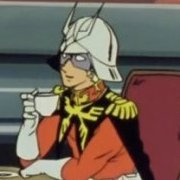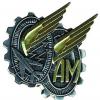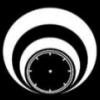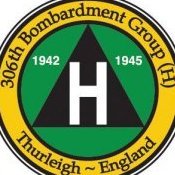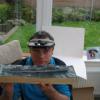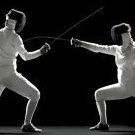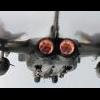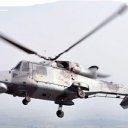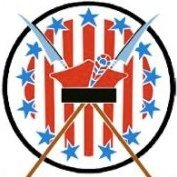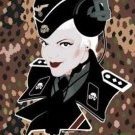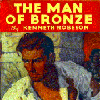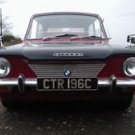Leaderboard
Popular Content
Showing content with the highest reputation on 13/06/17 in all areas
-
Hi everyone. Here is my attempt at the new Airfix Stuka. A very nice kit and I enjoyed building it although I had a disaster towards the end, I managed to spill white spirit all over the rear canopy, which fogged it immediately. Not to worry I thought and set about polishing it out only for it to crack multiple times during the process. Not to worry, I thought again, I'll contact the nice chaps at Airfix and buy a replacement, but unfortunately the reply came back 'we have no more canopies in stock... sorry' So rather than giving up on it I decided to leave it as it is and claim that it had a nasty brush with a Spitfire! Or until at least an alternative replacement can be sourced. For this kit I used Xtradecal sheet X48164, this particular aircraft is from 6./st.g 77 circa 1940. Painted with Xtracolor enamels and weathered with pastel chalks and oil washes. The only additions I used were seat belts made from Tamiya tape, I also used Eduard masks for the canopy (highly recommended), plus a little extra riveting here and there. Thanks for looking, gazza l27 points
-
Hello, I would like to present my latest completion; S&M model's 1/72nd Bristol type 171 Sycamore Mk52. Very nice kit, went together quite well and required very little filler, The clear parts were surprisingly straight forward too although I did experience a slight mishap by dropping and splitting this section from the rest of the fuselage. Luckily it was in the early stages of the build so there wasn't much damage! I've made an error with the white sections on the aircraft. The section below the main rotor should not come down as far as the hoist. The rear oleo struts are not quite right which resulted in the aircraft not 'sitting' correctly. I had to extend the front oleo to give the distinctive low tail look the sycamore has. Unfortunatly this has resulted in the poor pilots having to jump to reach the step!! Not sure if the error was my doing or the kit parts are the wrong length? Something to bare in mind if anyone is building or planning to build the kit. Pretty much out of box although I've added some minor additions which are a mix of spare PE & scratch built brass / plastic rod. [/url Thanks for looking Aaron26 points
-
日本航空自衛隊 第6航空團 第303飛行隊 小松基地 創隊60週年紀念塗裝 2014年9月 第303飛行隊(だい303ひこうたい、JASDF 303rd Tactical Fighter Squadron)は、航空自衛隊第6航空団隷下の戦闘機部隊である。小松基地に所属し、戦闘機にF-15J/DJ、連絡機にT-4を運用する。 JASDF 303rd TSF F-15J Eagle "60th Anniversary", September 2014 Komatsu Air Base.20 points
-
I didn't consciously decide to go on an old Frog kit building frenzy. Or, at least I don't think I did. Regardless, here's another one. This time it's the 1977 Novo release of the 1974 Frog Lavochkin La-7 in 1/72nd scale. I've built it straight out of the hang card bag with the exceptions of a total rescribe with recessed panel lines, the addition of a bit of plastic card to block off the main wheel well and employing a very nice set of Authentic Decals printed in, rather ironically, Russia. I cannot speak to accuracy as I didn't bother to check but it looks rather like the La-7 photos I've peered at. It's a simple kit but pretty cleanly molded and didn't require a great deal of fettling or putty to get it paint ready. I went with Vallejo Model Air colors for the camo and Tamiya for the rest. Both always go on very well, especially over Stynelrez primer which seems to bond so well to the plastic and the paint to it. Oh, and I used some Bare Metal Foil for the strips around the cowling. I also tried the artist oils wash technique for the first time. It's a bit subtle on this particular job, maybe used too dark a brown, but I quite like the idea and will be using it more often for sure.19 points
-
Hello Here is my last build : 45th Tactical Reconnaissance Squadron Mc Donnell RF-101C Tan Son Nhut, Nam around 1970. This is a 1/72 kit from Valom. soon to be published in the French magazine "Avion de Combat" and to be seen at Modelbrno on Saturday. Patrick15 points
-
The Spadgent has started a build thread on this venerable but in my opinion, very good, kit. I built this some years ago after I had returned to the hobby after a 30+ year break - it was the third kit that I tried. I had built one of these when it was first released but did not have the skill or patience to do it justice then. I bought this second hand in the late 1970's so it was in dark green plastic and had no flash - just all of the ejector marks! I threw away the glazing and replaced it with clear acetate sheet and had to mould the upper wing centre section top (mine was missing and Airfix only re-released the kit after I had completed it). I hand painted the cockades, fin flashes and letter on the nose. The serial is from transfers as are the lift here markings. I also built the kit in a completely different sequence to the instructions because I knew that the wing joints are very tricky and care and dry runs are needed if that particular operation is to be successful. This represents a machine from an RNAS unit in early 1918 and was used for day bombing. It is worth remembering that at the time this kit was released it was one of the best quality kits on the market, which shows just how far our hobby has come in the intervening years. There are three other photos on The Spadgent's build thread page. The model is rigged with clear monofilament thread - it nearly drove me bonkers as it was almost impossible to see!. It required drilling lots of holes, (the holes provided by Airfix in the wings are a bit of a joke), and there were some other issues which I had to deal with. There is a build thread for this on Airfix Tribute Forum and an article on Modelling Madness if anyone is interested. I added the ladders and other bits just to give it a bit more interest. I know that the tail dolly is a work of fiction on Airfix's part but I could not find suitable photos/drawings at the time to scratch a proper one. In all an interesting build and one that I had long wanted to complete. It was also one of the last kits that I built as I found two completely forgotten, incomplete conversions in my roof when I was building this and looking for something else.... and so I completed them and continued with other conversions which I had also long wanted to make, and now I scratch build. P14 points
-
Avro Vulcan B.2 Scampton Wing 1970's This is the 1/200 CyberHobby 'Blue Steel' boxing of the Vulcan B.2, recently completed for the 70's NATO v Warsaw Pact Group Build. There was a small amount of scratch building to make some bomb bay doors to turn it back from Blue Steel to a Free Fall B.2, but apart from that it was built OOB. I hope that you like it. This was the conversion work carried out to switch back to a more conventional role. And a final shot to give some idea of the size.11 points
-
thanks chaps & good evening so I had a blip with the canopy when I tried pulling a copy having spent all morning getting a nice glassy finish on the canopy plug, on the first pull, the sheet was not quite hot / flexible enough so I lifted it off and most of the primer surface came with it... insert lots of anglo saxon language.. the root cause goes right back to the beginning as I had made a master and built up the plinth for it to sit on from balsa, and set this in the box to pour RTV over to create the female mould - it was at this point the balsa being light and full of air made the plug turn turtle in it's box so the balsa was at the top and the canopy below. At the time I thought thats ok, I can just hold it under the surface of the rubber and still get a good mould.. problem was that because now the surface of the canopy was at the bottom, al, the little bubbles had nowhere to go so I ended up with a very pock marked master.. again, I thought thats ok, I can just fill all the holes and go from there.. FAIL, even now as I look at the finished plug, the heat must have softened the paint as these have become visible as depressions again after trying to pull that first copy.. the upshot is, I am going to get this master ready AGAIN (6th time...), and then cast a new one without all the inherent flaws and polish that up to a shine, with no primer.. I couldn't face going back to the canopy plug straight away after messing it up so I wanted a little 'get back into the groove' project that I knew wouldn't frustrate & stress me out like vacforming does, so settled on the cockpit door.. ..again I scaled the drawings, and started with the outer skin... ..after adding the rivet detail, I folded up some litho into the structure sections - imparting curves into folded beams is really tough, so settled on plastic ribs as the interior face is painted anyway.. ..the canopy slide rail forms the top part of the door structure.. ..the remainder of the structure was added including the slotted hinge area at the bottom... ..started to assemble the tiny parts for the release mechanism from tube & folded ali - the handle I had already designed as part of the PE set I did right at the beginning ..and with the mechanism added before painting - the two big rivets are just holding it all in place as I wanted to paint it and then add the bits to keep the natural metal finishes.. ..and with a pin to illustrate scale.. ..painted & assembled and with tiny springs added to the latches.. ..when fitted, it will look something like this... ..so, that was a nice little diversion - now back to that damned canopy TTFN Peter11 points
-
I have just found theis: - shows how far behind I am! I wrote a build thread for this on Airfix Tribute Forum a few years ago under the handle Stevef - it was the third model I attempted after returning to the hobby after a 30+year break. There are some issues with the kit - in particular I found that the tail needed some attention as the fuselage holes were in the wrong place for the struts. I sanded down the ribs completely. The fuselage need to be assembled carefully and in stages - although you cannot see the fuel tanks they are essential as they help provide essential support and help keep the structure square. I was not helped by having the upper part of the centre section of the upper wing missing so I had to mould one! The engines were fun to mount too - read how I did it as i cannot remember the details now. The rigging is not really bad as this model is so large you can get to it. Except the tail that is, which I rigged during construction. I assembled the wings in stages and certainly not as per the instructions because otherwise the rigging is almost impossible - again see my blog. This actually builds intto a good model if you have the patience - so take your time and you will be well rewarded. Here are some pics odf mine - an RNAS machine from early 1918. All markings were hand painted except for the "lift here" markings because the transfers from my kit were too old and were past use. I rigged this with clear thread - and it nearly drove me mad as I could not see the d********d stuff! P10 points
-
Tristar made a beautiful kit, that was lots of fun of building it. I added the Friulmodel metal tracks, base - Fields of glory base no.4, figures can't remember. Interior - barely seen after finish.9 points
-
Hi guys. I am super pleased to bring you the RFI of my Academy P-38 she has taken a month or so to put together between life and work. I decided to build this as the P-38 is one of my all time favorite looking aeroplanes, the twin booms and saucy nose art of these brash beauties was always something very "American" and such a departure from other schemes and markings. The WIP can be found It's been a really fun build with loads of extras thrown in for good measure. I'll list after the pics. I wanted to test out my Photo tent that I picked up a while ago, I was intrigued as I usually cobble something together from paper or go outside for my RFI shots. I have taken such a lot of pics and I can't choose which ones to add so I'm going to share them all. hope you're ready there's a metric flip tonne of em. Phew! I'll post a sign off in a sec. just want to get these up first.8 points
-
Hello modellers! Today let me show you my new F-104G Starfighter in 1/72. It depicts a German Airforce Starfighter from Fighterbomber Wing 31 “Boelcke” in Nörvenich from the late seventies. Despite the fact that the Italeri Starfighter is less detailed that the Revell or Hasegawa models, I like the kit as there is no option for a two-seater, making assembly of the fuselage a lot easier. As it is the second G-model I built from this brand, I knew very well what to improve. I scratchbuilt a new ejection seat as the Martin Baker seat from the kit was too small and nearly disappeared in the cockpit. The undercarriage was detailed with silver rod and stretched sprue and the characteristic bulges in the main landing gear doors sculpted with styrene sheet. Slats and flaps were cut and glued in extended position. Navigation, taxi and landing lights were added as well as collision warning light from sculpted rhinestone. The small stall warning probes were scratchbuilt from rod and aluminium tape and a new pitot tube was made from brass tube and silver rod.. The paint scheme was easy to apply as there are Revell enamels that matched the colors without the need of mixing. Gloss coat was Gauzy and matted with Tamiya acrylic paint. The decals from the box were very nice and worked perfectly. Found two very helpful sources in the web for a proper Starfighter build: https://www.youtube.com/watch?v=aKv9lsdln7E http://www.rolfferch.de/F104G/ Hope you like it Mario8 points
-
Hey guys, may I present my rendition of the earlier 2009 Matilda as seen in North Africa. Having recently finished my first year of A levels this things pretty much kept me sane throughout the exams! The construction was the average 'shake and bake' of the new-age Tamiya stuff. The attention to detail on the casting was particularly nice I found. Painting was... interesting... may I temporarily retract the sanity statement? The caunter scheme was painted using the tamiya colour call-outs and a lot of masking with the extra-thin contouring tape that Tamiya also offer. Weathering was completed by a few filters of ochre oil paint thinned down followed by dry brushing, limited chipping and then a bit more drybrushing. The track was left till the end where it was first sprayed Tamiya Dark Yellow, then dry brushed with Humbrol 33 black and then thoroughly scrubbed with a graphite stick. Thanks for looking! Sam8 points
-
I can see that there is just NO way of getting out of this now will have to try and work out how big this diorama will end up being it is not the making of it it is the transporting when taking the things to shows I will have to start hiring a van Anyway more progress got some of the paint work tidied up and started to assemble the light tower and ladders on the cabin deck even got the bulb screwed in Fnar Fnar Beefy the tormented diorama builder8 points
-
Hiya Folks, Here is my rendition of the new Special Hobby 1/72nd Barracuda Mk.II which is an excellent little kit and much better than the original kit by this manufacturer. The cockpit detail is much improved and the detail everywhere is also better but I thought that the propeller blades were a little too short and so replaced them with a set left over from an old Frog Barracuda kit. I would have liked the canopy to be separate to show off the excellent interior but that is not the case,....however I did remove the pilots canopy and added two triangular windows from clear plastic were added to the rear of the windscreen. The kit decal options are good, but for my first one I chose to replicate an aircraft from 847 NAS which appears on pg 325 of the 1st edition of Air Britains Sqns of the FAA by Ray Sturtivant,.... decals by Xtradecal. As usual the model was brush painted and I cannot wait to make another one,....... well done Special Hobby on revisiting an old favourite, Cheers Tony7 points
-
It was. [Extract from RAF PR blurb when they put up the statue of KP in Waterloo Place] Sir Keith was originally from New Zealand and became an air ace with the Army’s Royal Flying Corps. Initially in the First World War he served as a soldier at Gallipoli and the Somme, but became a pilot and ended the war having shot down 20 enemy aircraft. After the war, at a time when air flight was still in its infancy, he decided to demonstrate what could be accomplished with large aircraft. Sir Keith and his crew of eight flew their Handley Page 0/400 with two 350 h.p. Rolls-Royce engines at an average airspeed of 66mph. The 1,880 mile flight in 1919 took 30 hours in the then state-of-the-art bomber despite unpredictable weather, and returned four days later. (Average air speed of 66mph...? Oh. Em. Gee.) By the way, if you haven't seen this, it's well worth a look. Partly because it might show you things you've missed, but mostly because it's a stonking piece of scratch building: http://www.wwi-models.org/IM/British/hp_0-400.html Ooh, and more folding goodness, as befits an aircraft with naval roots (not to mention a colossal wingspan for that era). Go on, you know you want to... P.S. The folded wings appear to have no visible means of support other than the hinge, which I guess explains the enormitude of that tree-trunk strut at the fold point! I haven't studied the Airfix instructions, but broadly their view of the rigging doesn't look too bad, judging by this shot. I think I built this kit approximately 50 years ago...7 points
-
Thanks to everyone for the interest in this lovely aeroplane. It seems I'm two pages in and not even a whiff of glue or cut plastic. Best remedy that! Aerosmith were great by the way. Any way let's get on with the show before @Martian Hale explodes. The first few steps would have me build the wings. aaaand the rigging. According to my book well my two books this rigging doesn't look that accurate anyway and there is no tail rigging so I've deciddd to do the rigging at a later date with EZ Line. so first off a question, I've been thinking about this for a while and I know the wing ribs have been described as planks of wood but to be fair I don't think they look THAT bad. Here you can see the planky ness but instead of sanding them clean off and starting again I'm thinking of sanding lightly and trying to achieve more of a taught cloth look. from these pics it looks achievable as it's not too far off. And here with the before sanded kit part. A subtle approach keeping as much as the kit as I can. sound like a plan? It sounds like plan to me. Thoughts? so while mulling that over I'll move onto these bits looks more like it! aaaargh pin mark time. why Airfix why? There are 22 on just those 3 bits, not to mention the part numbers on the side bits. Once again I'm taking my own advice and keeping more of the kit, so instead of sanding the planks clean on the floor part I added blobs of milliput and dabbed flat with water. I'll chisel them out when dry. Now I don't have one of those electronic rubber things but I bought a milk frother from Ikea about a year ago for this very reason. So I cut the end off and popped on a small pip of milliput. I'll leave that to harden then I can glue on sand paper to tackle the raised marks on the inside walls. Next up is the pit parts. It should look like... and Airfix gives us. a bit of clean up then. Heres the rear section. that pad looks comfy. I filled the dipped pin marks with MP then smoothed and left to dry. The steering wheel got cleaned up but I don't really like it. I know you won't really see much of it but I hate the way it's moulded on like that. So I cut it off, cut out the middle section of an old steering wheel I had in the spares box, cut the central cross section and glued everything together. its not 100% but it's better to my eyes. I need to leave those bits to dry now and I really need have to have an early night as I'm pooped after my busy weekend. Thank you all once again for taking an interest in this. Let's see if we can't make it a bit of a doosie eh. Take care and as always, "Happy Modelling". Johnny wooden hills.7 points
-
Dear all, Just completed this evening, Wingnut's 'Le Rhone' engine version of the Camel. I did experience a few hiccups during the build, but got there in the end. Built out of box, brush painted and rigged with combination of 2lb fishing line and Prim elastic thread. Presented in the markings for Canadian ace Donald McClaren. I learnt a few lessons during this build which will stand me in good stead for when I get around to the the 2F1 'Ships Camel' version in my stash. Not perfect by any means but I am pleased how it turned out. Regards Dave6 points
-
Paid a visit to the Yorkshire Air Museum on Sunday and was lucky enough to see the first taxi runs of the year of the working aircraft. The museum had organised the Hurricane to do a couple of flypasts. Ian[ URL=http://s1158.photobucket.com/user/camper1231/media/IMG_0974_zpslll4eavr.jpg.html][/URL]6 points
-
Another 1/72 build.. Intakes almost a difficult as Revel 1/48 Tornado.. OOB build. Decals were great, they even include some RBF flags. Mr Hobby paints. And placed on top of my cabinet as running out of space now... the reason to go to the smaller 1/72 scale.. anyway thanks for looking... now onto the next build.. which will be a Tamiya 1/48 FW190A as its small and I have a space that will accommodate it...6 points
-
Hi everybody; WE progress report airing on Tuesday - very busy day yesterday at work Little time for modelling last WE; I went to a local model show in Cremona on Saturday where I met Silvano ( @phantom61 ) and Eugenio ( @72linerlover). Great to meet you there, guys! Eugenio brought along a Macchi C205 in 1/72 he made a few years back ( ) which is a little gem, with engine, machine guns and wheel bay details and removable engine covers - crazy small parts in that scale! Many outstanding models in general, I'm eagerly waiting for them to upload the show report on their website Back to the update: wing dihedral for the C202 Installing the water radiator: I first masked the corresponding fuselage area to spray some Lifecolor Grigio Mimetico, as I think it would have been very difficult once the radiator is in place here it is after primer and a couple of Grigio Mimetico (Lifecolor Dark Gull Grey) coats I did the same for the radiator cover internal part and for the front and back lips The radiator itself received a black tempera wash: and was then glued in place with CA Cover is on; I used CA inside, where it mates the bottom of the radiator, and Tamiya Green Cap along the edges touching the fuselage Some filling is required here, as the reference pic show a very smooth area, with some sort of fairing from the radiator cover to the fuselage. Same on the other side, although less "gappy" There are a few more tasks to be accomplished prior to priming the model, one of which is scratch building the wingtip navigation lights; so I cut out the plastic ones and glued in two bits of clear plastic, using CA gel The light bulb was reproduced drilling a 0.4mm hole in them and brush painting some Tamiya Clear Blue and Clear Red, sealed with a drop of Future The idea is to leave this cure for a couple of days, then start sanding the clear plastic back to shape and polishing it - tonight's job, probably I've also started working on spinner and propeller, cleaning the parts The spinner plate mounting peg is designed to be inserted into the fuselage prior to mating the two halves, so as to allow for a spinning propeller; since I couldn't care less for that, I decided to leave the mounting hole free, to be used to insert a supporting rod for the painting stage, and I modified the mounting peg cutting away the largest part Test fit and glued to the spinner plate Spinner and propeller dry fit, pretty good: Another dry fit of the spinner plate to the fuselage shows I need to sand flat the front fuselage area here you can see it better That's it for this WE progress report, comments welcome as ever Ciao6 points
-
Hello The engine cowl is separated , the fuselage shape rebuilded with Tamiya two-component sealant and the air outlet sanded. wings added6 points
-
Hey Fellow Hosers, I think I'm at a quitting point with the Hose install. I still have plenty to do with the plumbing and hoses, I just need to secure some frame elements in order to finish connecting the hoses, and those things are a ways down the road yet. Here's how things wrapped up... Final shots of the Transmission out of the frame...I painted this at night, so that would be Nocturnal Transmissions Producing the hard piping got a little tricky at times. I set the rods into a basic guide and heated to secure the bends... Time to lays some pipe baby!... I'm going to leave things like so for a while. I have more stuff under here and beside this location for install. I'll be back with the next exciting chapter...what ever that is. Rich6 points
-
If you can scratch build a Manc like the one you did, the conversion will be a walk in the park Ian. Is it the Blackbird conversion you have? Got some photo's of the interior done just now. The interior was painted with Vallejo Panzer Grey primer then overcoated with a mix of Tamiya cockpit green lightened with some white. Various bits have been added using plasticard, I'm loathed to buy all the detail sets you can get when most of the interior is hidden. The only Eduard parts I've used are the instrument and side engine control panel Cheers Neil5 points
-
5 points
-
Hello all, 2017 marks the 80th anniversary of Prague's international airport (PRG). This weekend, they hosted an open doors event that featured a small area with some aircraft to look at and poke around in as well as a limited number of guided excursions around the airport. Unfortunately all the excursion slots got filled before I was able to get onto one. The aircraft on display included Czech historic types such as the Aero Ae-45 and Ae-145 along with a Let L-200 Morava. Also in attendance was the world's only flying Lisunov Li-2 from Hungary. I managed a few presentable shots of the Aero Ae-145, the only airworthy example of the type remaining in Czech skies, and the Li-2:5 points
-
TE711 Mosquito FB6, 711 Squadron FAA, RNAS Ford Tamiya 1:72 built pretty much OOB. Xtracrylix paints, Freightdog transfers from Brits at Sea transfer sheet and matted down with Liquitex Professional Acrylic varnish. All brush painted. Montex mask used for canopy.5 points
-
Took a serious run at constructing the bottom and sides of the rest of the nose, and putting in cockpit elements this past weekend. The bottom of the nose is a fairly complicated shape, going from flat to well-rounded while slanting a bit upwards, and its rearmost portion is involved visibly in the cockpit interior. After some thought, I decided the best way was to use some 3mm sheet scrap I had left from doing the second turtleback; the piece had twisted a bit when broken on its score-line, and the angle was pretty close to that it ought to have for mating with the existing fuselage assemblies. So I laid out the measures for two nose bottoms, and set to work: it's a lot easier to cut plastic out of an interior area when the piece you ant is still part of a larger piece (in fact, that's true for a lot of shaping and trimming of small parts). Here is one with the interior removal done, before it is removed from the 3mm piece with a razor saw. The flat bit is a continuation of the cockpit floor, and I tried to match the interior dimensions of the existing assemblies. Here the first piece has been cut off, and marked for sanding to proper section. I sanded away a bit too much on the matig surfac, and didn't get the interior match quite right either on the tis first go, so I filled in on the sides with thin shims, and 'capped' with a bit of 1mm sheet. I wound up having to shim the port side as well. The second one went much better, though the 'cap' struck me as a good idea and I repeated that on the second one even though the interiors on it matched up pretty well. Here are both pieces attached to the existing fuselage assemblies, and blended in with sanding and here and there a bit of CA gel for filler. Here are the sides attached; as before, oversize pieces of 0.5mm sheet are attached and trimmed down. In this instance the 'panel line' does not co-incide with the seam, but follows where 'round meets flt' on the bottom piece, and will have to be scribed in.... Here is the interior, with the structural tubing in.... First interior component was the pilot's 'perch'.. This was attached by a complex web of tubing, none of which would likely be visible from the cockpit opening, so I simply cobbled together a quick pillar and base. The seats are constructed from four pieces each of 0.5mm sheet (seat, back, and sides), tinnefd down from the outside and given a 'bead' of CA gel on the edges. The foot-guides are strips of corrugate sheet, the 'stirrups' on the pedals are split 'o' bits shaved off 2.4mm tube. Here are some component bits put in; ammunition box and feeds (more to brace the sides for future work than because they will be much seen, a throttle and a 'crank thingie' and a holstered flare gun.... The throttle quadrant was made by cutting a 'V' into one end of a 2mm x 0.25mm strip, then trimming out the 'V', then putting in a curve in th end of th same strip with a half-round needle file, trimming it off, gluing it to the 'V', then rather carefully doing a bit of finish sanding to shape and thickness. Bits of 0.25mm round rod were added, and given 'knobs' of CA gel. Here is the 'pilot's perch' painted and installed.... eat belts are strips of foil from Ferrero Rocher candy, with has a nice bit of texture, with extra bits of 34ga beading wire. Here is how things stand now, with cross-wise structural tubing in at the front, and sundry other bits in place.... 'Wheel' at starboard is tail-place incidence control, silver bit in the center of forward framing is the wing camber control crank, bit of wood at the starboard front will be topped with the compass. Next step will be putting in front of the fuel tank (up against the cross-tubing in front), the instrument panel, and topping up the nose....5 points
-
Gent's thanks again for the encouragement and entertainment with this build Not to sure about all this cricket stuff I was just going to be building the ship I have been very busy at work this week and the weekend what with the new model change over so not much time at the bench I did manage to get some painting done on the sub assembly's and hope to get them fitted this week5 points
-
I've had a soft spot for this little beastie since back when I first had the Putnam book of Naval aircraft. I know there is a resin kit in 1/72 out there, but I like scratch-building, and had been thinking to do a Flycatcher for a long time. What ticked it over was the MMP number on the type, with photographs of Flycatchers on the China Station in the late twenties. I have already done the two motors, at least mostly: exhausts I think it best to do later, and one will have the spinner, and so not need frontal crankcase detail, but I have not decided which. Here is how the motors stand now... (a U.S. penny is about 18mm in diameter) These were done as a stand-alone project, with another motor, and how they came to this point can be found in this thread: Work has now been begun in earnest on the fuselages. While straightforward in general, the Flycatcher fuselage is not simply shaped. It is almost as if the designer had been instructed to see to it as little as possible was square to the line of flight, and to choose, whenever faced with the choice, the oddest of internal proportions available. It took some thought to figure out how to start. The bottom of the rear fuselage is where I began. It is a piece of 1.5mm sheet, cut to the guide of a template trimmed from a copy of my Grainger drawing. It is sanded to some curve in section, and tapered down for and aft in profile. Next a stern-post of 1mm square rod was attached at the very end, and sides of 0.5mm sheet attached. These were a bit high, and over-long... They were trimmed down to proper height, and cut off on the line where the fabric covering meets the metal panels at the cockpit. Some spacers were put in for safe handling. The cockpit floor (and attachment point for the lower wings) was added. It is of 1mm sheet, and cut a bit over-size. Rear portion of the cockpit sides were then added, made of 0.5mm sheet. The nearest fuselage shows these, and the floor, all trimmed down to size, the furthest shows them in their raw state. At this point, the rear turtle-deck application was begun. First a sheet of 0.5mm sheet was put over the top. Then the front former (and backing of the seat) was attached; it is a piece of 1mm sheet, square to the bottom piece. I added a bit of color for the inside of the fabric, which might be seen looking straight down into the cockpit, and black tube (0.6mm rod) where appropriate. I got a bit ahead of the photographing here. A triangular 'spine' of 2mm sheet was put in down the center from the cockpit rear to the stern-post, The turtle-back of the Flycatcher is unusually deep, working out to 7mm at its highest point in scale. My usual method is to just put in a solid piece of plastic and sand to shape, but this is too much for any single thickness, or even horizontal laminate. I thought to use long, triangular 'planks' of 2mm sheet (two on either side of the spine), but when I got the first ones on, the gap between them and the spine was so narrow I just started filling it in with shims and trimming them down. At the point of this photograph, the turtle-back is only roughly shaped. I went a little more regularly on the second. I stood planks of 3mm sheet alongside the spine, then put pieces of 2mm sheet alongside these.... Here are both fuselages with the turtle-backs shaped and smoothed. One of these will be a machine off HMS Hermes on China Station, on floats, circa 1926, one will be a machine off HMS Courageous in the Mediterranean, on wheels, circa 1929 Next step will be further extension of the cockpit sides, and interior work....4 points
-
Got this one finished and in the photo booth. It really is a great kit with no major problems, may possibly add a mine detection device when it goes on a diorama eventually. Also might be worth saying that the doors and the rear boot section are only tacked in with a bit of pva in case I have to open them later which is why you might spot a bit of a gap. Kit manufacturer: academy Scale: 1/35 Type: M1151 Humvee Extras used: DEF models resin sagged wheels Paints and colours used: MRP 080 and various tamiya. Weathered with mig pigments and ak washes4 points
-
Hi folk's,last in the trio of Hobbyboss easykit's for the From Russia with love GB,for it's type a great easy build much more refined than some in the range lovely panel lines and a canopy worthy of mention.In one of the schemes of Ivan.F.Pavlov hero of the Soviet union,I have not added the wire due to poor light and several pint's of Guiness last night and apologies for photo quality still using my phone.Thank's for looking in.4 points
-
This is the recent Avis kit of the EADS Barracuda drone. Apparently it is meant to compete with the RQ-9, and is a joint project by Germany and Spain. It's definitely a short run kit, but most parts fitted within tolerances. I did have problems with the rear fuselage/exhaust joints, with much putty/sand/repeat cycles going on there. I used Xtracolour X126 Grey overall. It seems they are painted the same color as the Luftwaffe Eurofighters. As long as manufacturers make kits of drones, I'll be there to buy and build them. This is completed aircraft #475 (8 aircraft, 2 ordnance, 7 vehicles for the year 2017), finished in May of 2017.4 points
-
Now very close to calling time on the rivets (though still the starboard sponson to do). The nose is far from simple to do, but I think I am nearly there (only some more double rivets around the edge of the nose to go). Seen from below: From ahead: And the underside with (I think) all the detailed bits and bobs now complete: Memo to self: still need to sort out those Doppler aerials. More soon Crisp4 points
-
Greetings This is a classic kit and one of the best representations of this aircraft . I was stationed at MacConnell AFB,Kansas in the 70's and got to watch them fill the sky. This aircraft has Kansas markings from that period and is a F-105F backdated from the kit F-105G. Aftermarket was Resin Seats, Metal Main Gear,MV Lenses for Landing lights, and Master Pitot. Paints were "what we have on hand"..Gunze Dark Green, Testors Acrylic Light green, Vallejo Brown and Humbrol Light Grey, over-coated by Testor Rattle Can Dullcoat (decanted). Had to go outside for the Photos because the model is quite Large . Reason for two different backrounds. Used Uschi Powders on Speed Brakes exhaust petals Really great kit of this Very Large "Fighter" Aircraft. Cheers Thanks for Looking Bill4 points
-
Hi all - well it's taken a few years but she's finally done. Decals from Pheon, lozenge from Aviattic, goggles from Pheon's German Pilots Accessories etch set. Turnbuckles form Gaspatch, and Helmets by me! A surprisingly large model but Im pretty pleased with the result- and another model has escaped the "shelf von doom" !! cheers Jonners4 points
-
I'm a Bass player. First Bass was a terrible 'Hondo' Fender Precision copy (1981). I had been playing piano and guitar since aged 6 and 10 respectively. I had become disillusioned with piano and taken to guitar. There were far too many guitarists around and at the time (why?, oh the folly of youth), I wanted to be in a 'band'. I realised that bassists were thin on the ground, so decided to migrate to the long necked rope stringed thingy ! The action on the Hondo was so high I felt G clamps were needed to hold notes down. For some reason I also found it Very unexpressive. So, at the age of 16, I bought, on the never never, an Aria Pro II fretless. Lovely. £285 in 1982 . Part time weekend job became *very* important for the repayments! Best bass I ever had. Sadly sold 5 years ago. A Warwick, then a Fender USA Jazz occurred in between then and now. I only gigged with the Aria and the Warwick. All 90's gigs. Just over 120. Decided: 'lifestyle not for me'. In hindsight, a lot of fun (and heartache and stress). Can't believe it happened. The things we do when we're young. How these stars play the same songs on stage for up to and over 40 years I'll never know. Very special and dedicated people in a frankly terrifying industry. Anyway. Ok. I'll play bass. @TheBaron would probably support my suggestion that we call ourselves something involving the word 'Rug'... Regardless of John Lennon suggesting that there were a number of holes in Blackburn, Lancanshire, conversely, given this thread, Blackburn, quite clearly, Rocs . Best regards TonyT4 points
-
Another of those BritModeler Venn diagrams; the muso/model correlation. FWIW, an equivalent Crisp pic would be 1. Fender Strat Plus (my choice for "the one I'd save from a burning house"); 2. Gibson SG; 3. Fender Japan Telecaster JD signature (though I'm in the process of selling this one); 4. Epiphone Firebird Studio; 5 & 6. 2 Dobros [cos I am really a slide player above all]. Mrs Crisp, however, is not a bass player!4 points
-
I've started the weathering process. The tank isn't clean and shiny any more. First chipping. I miss the molding seam on the commander copula, but just spot it now on the photo. Unlucky.4 points
-
Hello, A long time ago, about 3 years, I start this thing. More informations : http://www.pyperpote.tonsite.biz/listinmae/index.php/les-appareils-en-reserve/153-caudron-c-714-r-n-01 http://www.pyperpote.tonsite.biz/pages/caudron_c714rpag.html Sorry it's in french..... It would be neer to paint process. begining with the wings. The fuselage.3 points
-
Finally finished - the latest in Modelsvit's growing collection of one-off MiG prototypes..... this is the MiG E-152M. Apart from a few issues getting the cockpit/intake sub-assembly to fit, the rest was just the normal 'limited run' type of kit from Ukrainian manufacturer Modelsvit. Great surface detail, comprehensive decal sheet, etched brass parts, self-adhesive masks for the wheel hubs, dielectric panels on the wings and the canopy - but with the usual large sprue gates with every part needing to be 'fettled' before assembly. It looks highly accurate and was a pleasure to build. Three wingtip options are included - with dummy (port) and test(Stbd) missiles. The canards can be left off - replaced by a fairing. The centreline drop tank is optional - it was not carried during its few flights. Canards and front-opening canopy - note the HUD. This latest E-152M is the third 'BiG MiG' from Modelsvit - following their E-150 and E-152A..... All these many prototypes led, eventually, to the successful MiG-25...... I hope that Modelsvit will re-issue this kit with markings for the record-breaking E-166... More photos here. Ken3 points
-
3 points
-
I had a quick word with Mel. He had the first CADs, but he was not happy so sent them back for correction. The three main areas he has stressed on getting right is the nose, the canopy (the CADs were a bit too flat), and the tip tanks. I didn't ask how many he has planned for.3 points
-
I saw Aerosmith (supported by Chris Cornell) about ten years back when they played in Dublin. Absolutely stunning - definitely a stand out gig to look back on. Steve Tyler's on stage energy would have put a 20 year old to shame.3 points
-
Sounds like a supergroup is in the process of forming here with a human/extraterrestrial front line.3 points
-
Cheers, my dad dressed as Slartibartfast, and my mum dressed up as E. Gallumbits (retired) - she looked a bit like Nora Batty with an extra bosom... (I was 42 last week so we used the excuse for a Hitchhikers/'80s party!) Will3 points
-
Hi All Here we go! A couple of small patches on the Tomahawk, and a couple of pinhead spots on the Mustang, but overall solid. Good news and bad news:- All that dodgy pre-shading has gone, and all that dodgy pre-shading has gone Obviously the trick is to get the dark into the panel lines nice and neat without it covering the panel, then the top coat can be sprayed on thin enough for it to show through. Still a bit heavy handed, but getting there. The Dark Green on the mustang has some good places I might try running a thin wash over them once the decals are on, see how that turns out. Thanks for the tips on stretching sprue, I've quite a bit of it now! Comments and suggestions welcome Cheers Steve3 points
-
Shortened three times already and it is still too short - as we use to say here3 points
-
Despite feeling a little unwell yesterday I did manage to get to fettle a bit of plastic. I continued the build by making the rear cockpit bulkhead. This had to be very accurately made as there is a recess at the to allow the rear fairing to retract. This done, I marked the position of the bulkheads on the starboard fuselage halves and added the main longerons form .30 x .30 'thou plastic strip. Accurately cut these help lock the bulkheads in their correct position. Due to the way Special Hobby have moulded the wing root fairings, the rear two bulkheads will need to be extended downwards to meet the bottom of the fuselage. That done I might just be able to start thinking about detailing the interior of the fuselage. Thanks for looking Martian3 points
-
3 points
This leaderboard is set to London/GMT+01:00


